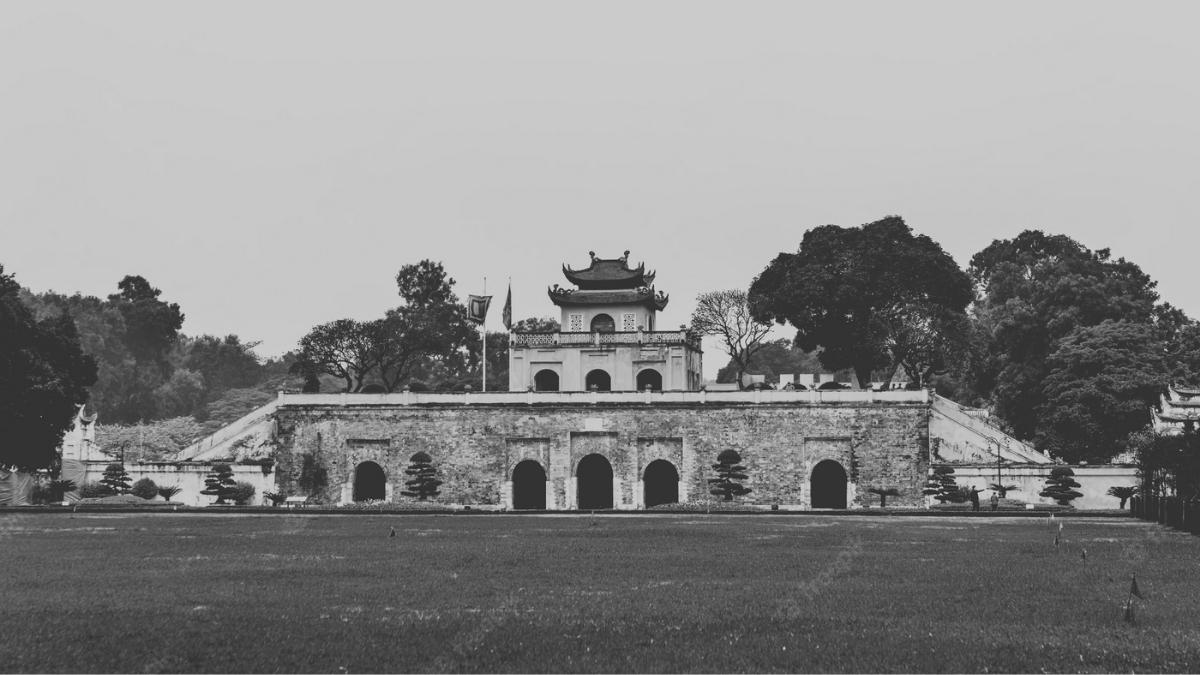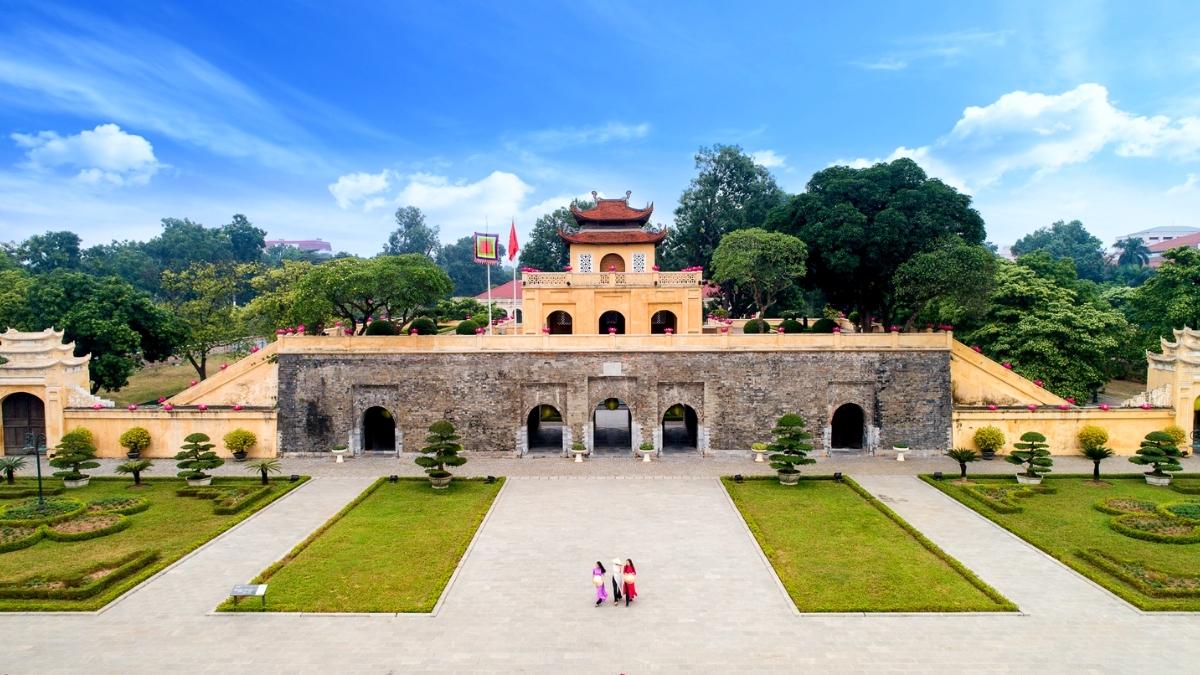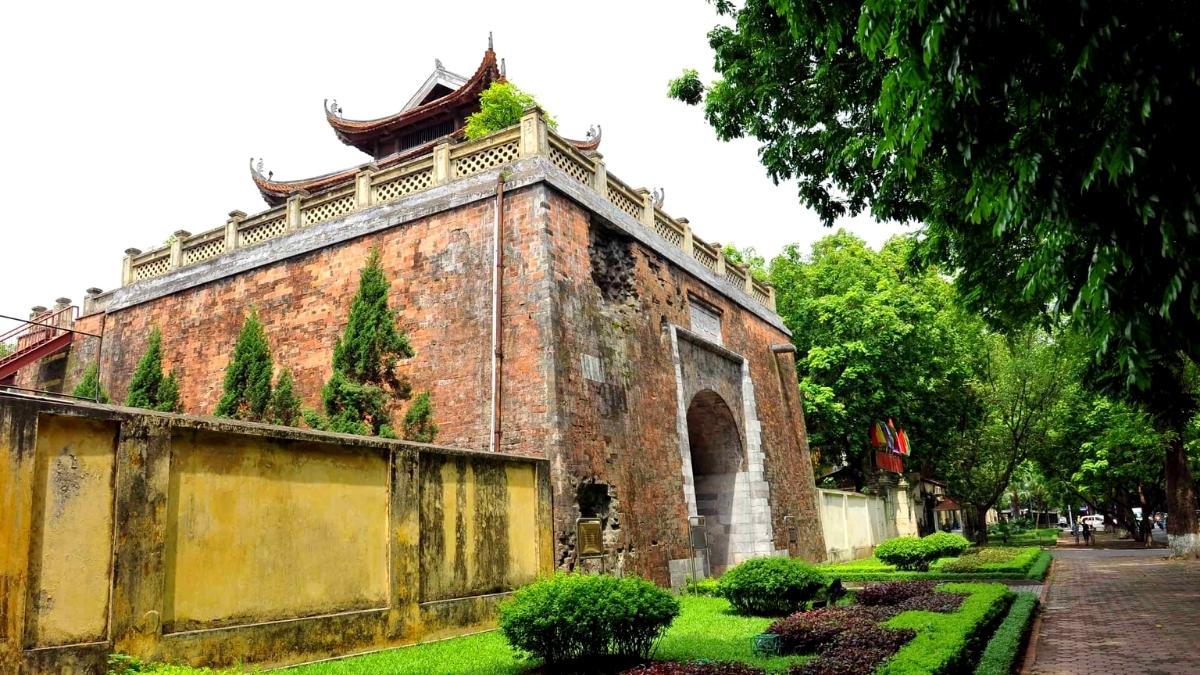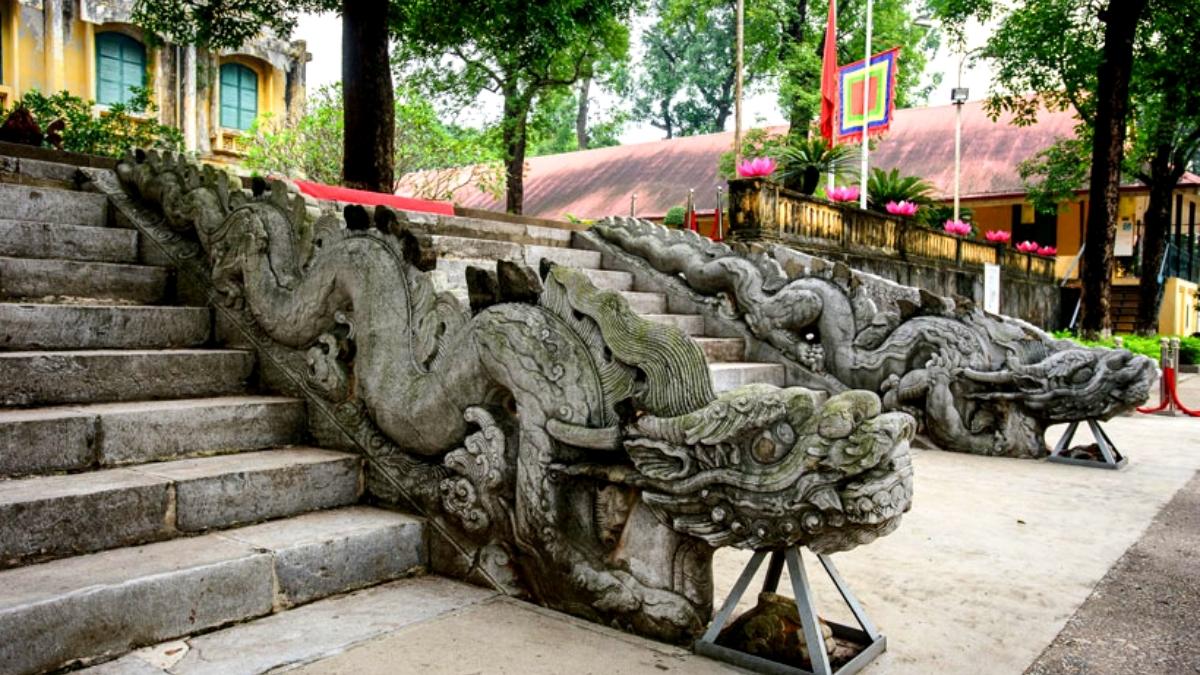Imperial Citadel of Thang Long
Thang Long Imperial Citadel is a must-visit attraction when traveling to Hanoi to have a journey back to the old time of the capital. Let's go!
The Imperial Citadel of Thang Long is an ancient historical site located in the heart of Hanoi. It has a long history with typical architecture and cultural patterns of the area. This phenomenal site was listed as a UNESCO World Cultural Heritage Site, making it a not-to-miss destination when you're in Hanoi.
- Location: 18 - 19C Hoang Dieu Street, Hanoi, Vietnam
- Opening hours: 8:00 - 17:00 every day, except Mondays
- Entrance fee:
- Domestic and international tourists: VND 30,000
- Vietnamese students: VND 15,000
- Children under 15: Free
History of Thang Long Imperial Citadel
Hanoi imperial citadel is a huge architectural work that was built, damaged by wars, and used for different purposes in different periods.
- 7th - 12th century: When Vietnam was under the control of Chinese invaders, the area was chosen to build a fortress.
- 10th century: Vietnam was ruled by the Vietnamese King - King Ly Thai To. He decided to move the capital from Hoa Lu (Ninh Binh) to Dai La (one of the old names of Hanoi) and changed the capital's name to Thang Long. The damaged fortress was replaced by the Imperial Citadel.
- 13th - 19th century: Vietnam had been through different dynasties, such as Tran, Le, and Nguyen, before the French colonial era. The historical site remained the center of regional political power during that period. It was also renovated and severely damaged by wars. Before 1810 when Emperor Quang Trung moved the capital from Thang Long to Phu Xuan (Hue), the Citadel was used as the Vietnamese Court.

Remaining site of Thang Long Citadel
- 19th - 20th century: When the French invasion started, most of the structure of the royal palaces and edifices was torn down. In 1945, the Imperial Japanese Army turned the historical site into a prison to capture more than 4,000 French soldiers. In 1954, it became the headquarters of the Ministry of Defense.
- 21st century: In 2004, people excavated several old artifacts and items that were once used between the 6th and 20th centuries, such as the foundations of ancient palaces, roads, wells, and ponds. In 2010, the Central Sector of the Thang Long Imperial Citadel was titled UNESCO's World Heritage Site.
Cultural & Architectural Relics
- Hanoi Flag Tower
Hanoi Flag Tower was built in 1812 under the last feudal dynasty - the Nguyen dynasty. The tower, standing at a height of 33,4 meters, is the spotlight of the city. It consists of truncated square pyramid-shaped floors with a brick surface. The base, the second floor, the third floor, and the top are the four main structures.
Four doors face four directions on the third floor. The cylindrical pillar is on top hanging the Vietnam national flag, making it an iconic symbol of Hanoi. The site functioned as a military post during the French colonial era and remains undestroyed until now.

The symbol of Hanoi Capital
- Doan Mon (South Gate)
Doan Mon is the main entrance to the Citadel from the south. It was built in the Le dynasty and renewed in the Nguyen dynasty. The gate, mainly made of wooden-hammer bricks, includes one main door in the middle only for the King and four smaller doors on both sides for the mandarins and other royal family members. Coming to the Imperial Citadel, you'll see rows of lotus-shaped lanterns lightening at night, creating a majestic scenery.

The main gate to the imperial citadel
- Bac Mon (North Gate)
Together with the South Gate, Bac Mon on the North is one of the only two remaining gates. It was designed as a watch tower gazebo with eight roofs and four doors. Nowadays, parts of the gate have become a place to worship two former governors of Hanoi (Nguyen Tri Phuong and Hoang Dieu) who led the people against the French invasion in 1873 and 1882. Visitors can easily see the two bullet holes caused by the French cannon as a clear remnant of war.

The north gate still remains its distinctive features
- Kinh Thien Palace
Kinh Thien Palace is located in the center of the complex. It was built in 1428 as a place for the celebration of imperial ceremonies and great national affairs. The meager relics of Kinh Thien Palace are the ten steps and handrails. You'll see the two sophisticated dragons carved along the stairs. Though the preserved part is not much, it reflects the grand scale of the historical site.

Kinh Thien Palace in the central monument
Best Things To Do
- Join the night tour "Decoding the Imperial Citadel of Thang Long"
Take a night tour, "Decoding the Imperial Citadel of Thang Long," to explore the archaeological site under the shimmering light. The tourists will be taken on an ancient royal journey by passing through the Doan Mon gate, watching performances on the glass floors, and visiting the gallery "Thang Long - Hanoi, a thousand years of history from the underground". At the end of the tour, there will be a decoding game for the visitors to decipher the signature artifacts shown by laser.

Join a night tour of decoding the Imperial Citadel Of Thang Long
- Explore 18 Hoang Dieu Archaeological Site
Contributing to the great value of the Hanoi imperial citadel is the 18 Hoang Dieu Archaeological Site, where millions of artifacts were excavated, some of which are even 1300 years old. A wealth of monuments and relics was revealed in 2003, accounting for only 6% of the process. The explored site consists of 3 floors and is divided into four zones; each zone represents the artifacts according to their historical periods.

Discover the archaeological site at night tour
- Visit D67 House and Tunnel
Thang Long Imperial Citadel was not only a remarkable place during the feudal dynasties but also an important military base during the resistance war against the US. D67 House was built in 1967 to be the Headquarters of the Defense Ministry. It includes working rooms, meeting rooms, and break rooms. It looks like a simple roof house from the outside, but it was built with tough materials and well constructed with a thick wall, two-layer door, sound insulation, sand layer roof, and two steel plate doors behind the corridor connecting to the basement.

The meeting room of D67 House
How To Get There
The attraction is only 2.5km from Hoan Kiem Lake - the center of the city; it's convenient to get there by different means of transport:
- Walking: It'll take around 20 minutes to walk from the center
- By taxi or Grabcar: less than 10 minutes
- By motorbike: 10 - 15 minutes
- By bus: bus number 22 stops right in front of the site
Travel Tips to Visit Thang Long Imperial Citadel
- As you visit a respectful historical site, wearing skin-showing clothes such as miniskirts, tank tops, shorts, or transparent ones is not allowed.
- Dangerous objects such as weapons, substances that cause fire, and ultra-light flying devices are prohibited.
- Don't miss the archeological site across the road.
Visiting Thang Long Imperial Citadel is a good chance to learn more about Vietnamese history and culture. There is much more to discover about the capital city and the country. If you are choosing where else to go, contact BestPrice Travel; we can help to arrange the best exploration plan for you.

